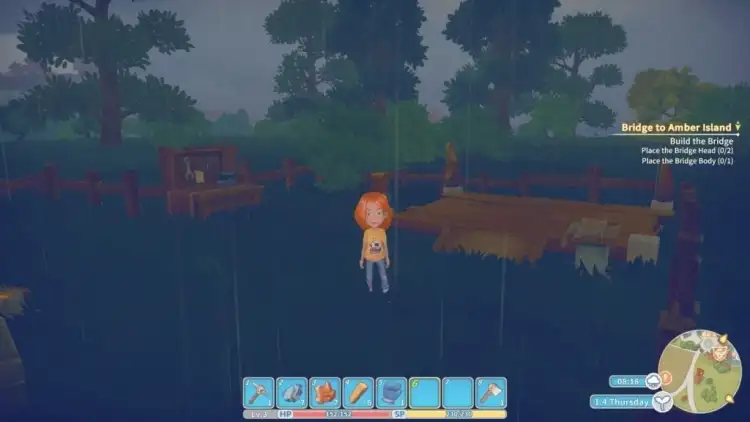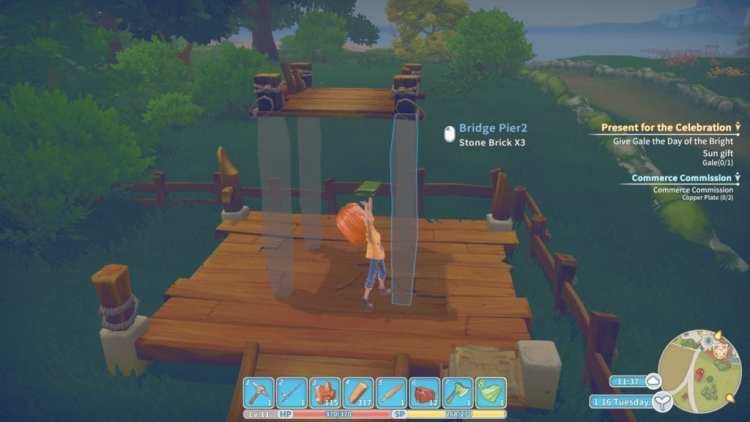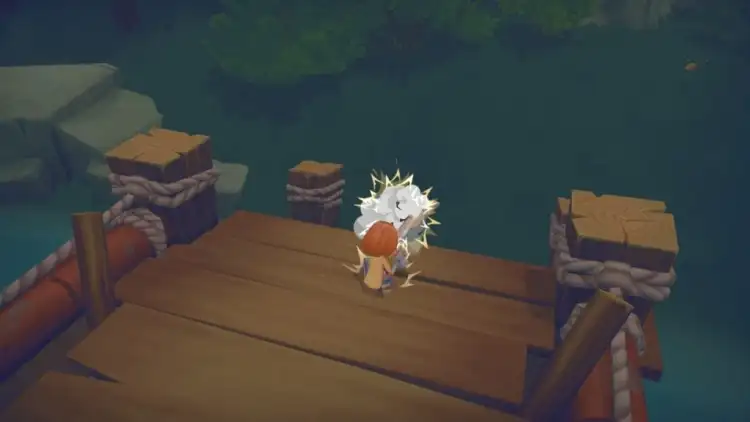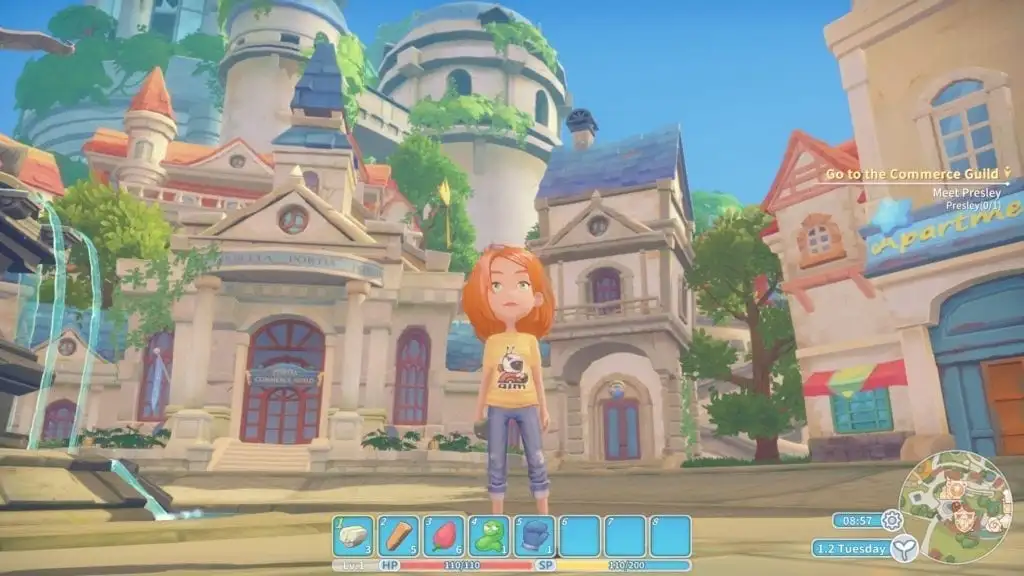I’ve had my eye on My Time at Portia for some time. From what I’d seen, I assumed that it was basically a 3D attempt to do what Stardew Valley did with the Harvest Moon formula. After putting some time into it, however, it’s clear that my assumption couldn’t have been more wrong.
Sure, My Time at Portia has some obvious similarities to Stardew Valley. They both involve you taking up residence in a relative’s old space. You set up shop, upgrade all of your equipment, and get to know the townsfolk. You can fish, mine, grow crops, and craft. But while Stardew focuses around farming, Portia instead centers around a workshop.
At the start of the game, your first real order of business is to get a business license. You then start using your knowhow to start building things for the townsfolk. Your first big job is building an entire bridge in order to get across the river. And the crafting in My Time at Portia is much more involved than I was expecting. Before I could even start on the bridge, I had a lot of work to do.

My Time At Portia Offers Freedom And Guidance Simultaneously
I needed hardwood planks, but I couldn’t reliably get them without a bronze ax. But to get the bronze ax I needed to build a furnace. Once I made a furnace, I needed to smelt a combination of copper and tin to make bronze. In order to build the three pieces of the bridge, I had to build three different devices in total. This led to gathering and mining. This is similar to how crafting works in most games, but it’s rarely as in-depth and pleasant as it is in My Time at Portia.
The thing that’s so great about the early part of the game focusing on the bridge is that it gives a razor-sharp sense of purpose. Not only did the game give me an interesting goal right away, but working to achieve that goal does a great job of tutorializing many of the game’s elements. More importantly, My Time at Portia does so without holding your hand. It allows you to break up the big goal into several smaller chunks that you can try and tackle one-by-one or all at once. This made me feel busy but absolutely not stressed like other games might have done.
As far as farming goes, yes, it’s there. But it doesn’t try to be like a Harvest Moon game or Stardew Valley. Those games have you till the soil, plant, and then routinely water the crops. My Time at Portia, however, treats farming just like it treats every other time-based endeavor, such as smelting ore. You can fertilize a planter if you want, but otherwise, you just put the plant in it and wait for the timer to tick down. This allows you to farm without using most of your stamina to water plants every day. For sure, the game feels more relaxed than similar games can.

Leveling Up In The Game Feels Great
This leisurely feeling is massively bolstered by My Time at Portia‘s game world. Leaving your house, you’re greeted by vast fields teeming with harvestable elements and monsters. Just walking across the map to find a plant or animal you need is quite peaceful. Your character also gains experience points that allow them to level up when they do damn near anything. There’s already a ton of content available here, but there’s a lot more to be added.
Naturally, My Time at Portia has fishing. However, fishing seems to be one of the best ways to make a lot of money. Spending a day fishing is a surefire way to walk away with hundreds of gold. While it’s fine for fishing to be lucrative, I do hope the devs give more of a monetary incentive to focus on your workshop instead of just catching fish.
Despite how much there is on offer, My Time at Portia still feels like an early access game. The menus don’t look quite ready and there are a lot of voiced lines missing, but the game is coming together nicely. Since there’s much left to be added, I only played the game until I ended up finishing my bridge. I’m planning to pick up from where I left off once the final release rolls around.

The Game Is Already A Great Time And Will Only Improve From Here
One thing I especially like about the crafting is the way larger pieces of equipment are built. Instead of simply jumping into a menu and hitting a button a la smaller things, the machines you’ll be using do things a little differently. You pick the item from your workbook and an outline of it appears. Then you highlight the necessary component in your inventory and put it in place. You do the same for the remaining pieces. This goes a long way towards making it feel like you’re actually building something instead of just hitting buttons while in a menu.
I’d say those kinds of details are what make the game feel special. It feels like I’m actually participating in the game’s world and truly building things. The entire game is just cozy and intimate in a way that many games can’t seem to quite nail down. It’s this sense of importance that has me itching to jump back into the world and keep building.
All-in-all, My Time at Portia is shaping up to be a fantastic game. In many ways, it already is, but it seems that by the time release rolls around it’s going to be something else entirely. The game gets regular updates that have added a lot of content, so early purchasers can definitely get their money’s worth. Anyone who feels like jumping into a relaxing world will find that this game is a worthwhile way to spend the time indeed. I can’t wait to see how the finished product turns out.








Published: Nov 23, 2018 05:01 pm